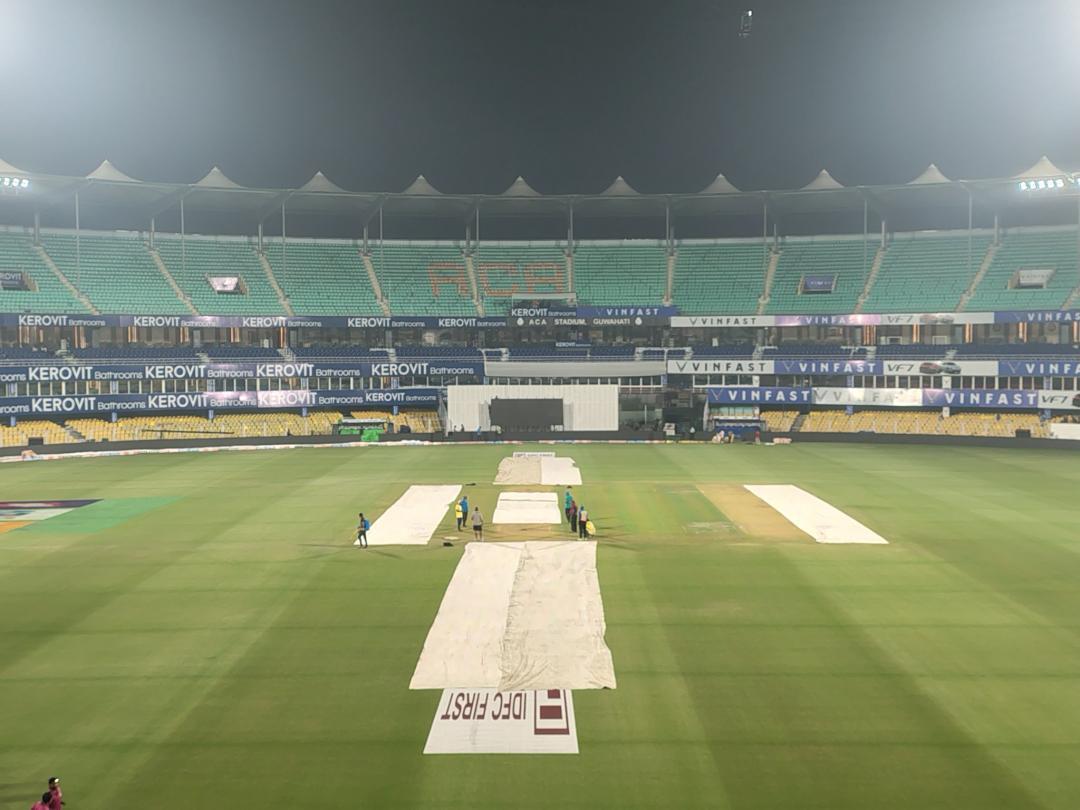
Unfair advantage to bowling team: Vernon Philander on bad light
The second Test match between India and South Africa got underway in Guwahati, with the first day’s play being affected by bad light. This is a common issue that has been plaguing the sport of cricket for a long time, and it has sparked a heated debate among players, coaches, and fans. Former South Africa pacer Vernon Philander has weighed in on the issue, stating that bad light gives an “unfair advantage” to the bowling team. In this blog post, we will delve into Philander’s comments and explore the implications of bad light on the game of cricket.
Philander, who had a successful career with the South African national team, knows a thing or two about the challenges of playing in different conditions. He has played in various parts of the world, including India, and has experienced firsthand the difficulties of batting in bad light. According to Philander, batters “feel hard done” by the uncertainty that bad light creates. When the light is fading, it becomes increasingly difficult for batters to see the ball, which can lead to a loss of concentration and a higher risk of getting out.
One of the main issues with bad light is that it creates an uneven playing field. The bowling team has a significant advantage when the light is fading, as they can use the conditions to their benefit. The ball swings more in bad light, making it harder for batters to score runs. Additionally, the umpires may stop play due to bad light, which can disrupt the rhythm of the batting team and make it harder for them to build momentum.
Philander’s comments are not just limited to the current Test match between India and South Africa. He is speaking to a broader issue that affects the sport as a whole. Bad light is a problem that has been around for a long time, and it is not unique to any particular team or venue. It is a challenge that cricket administrators and players have been trying to address for years, with varying degrees of success.
So, what can be done to mitigate the effects of bad light? Philander suggests that the game should be played in as much natural light as possible. This is a common-sense approach, as natural light is always preferable to artificial light. However, this is not always possible, especially in Test matches that are played in the late afternoon or evening.
There are light meters around, as Philander mentions, but they are not always accurate. The problem is that bad light can be subjective, and what may be considered bad light by one person may not be the same for another. This is why umpires often have to make tough decisions about when to stop play due to bad light.
In recent years, there have been efforts to improve the lighting at cricket stadiums, with the use of advanced LED lighting systems. These systems can provide better lighting than traditional floodlights, but they are not foolproof. Even with the best lighting systems, bad light can still be a problem, especially when the sun is setting or there is heavy cloud cover.
In conclusion, Vernon Philander’s comments about bad light are a timely reminder of the challenges that cricketers face when playing in difficult conditions. Bad light is a problem that affects the sport as a whole, and it is not just limited to the current Test match between India and South Africa. While there are no easy solutions to this problem, it is clear that something needs to be done to address the issue. By playing the game in as much natural light as possible and using advanced lighting systems, we can reduce the impact of bad light and create a more even playing field for all teams.
As the second Test match between India and South Africa continues, it will be interesting to see how the teams adapt to the conditions. Will the Indian batters be able to overcome the challenges of bad light, or will the South African bowlers be able to use the conditions to their advantage? One thing is certain, however: the issue of bad light will continue to be a topic of discussion in the cricket world, and it will be up to administrators and players to find ways to mitigate its effects.




